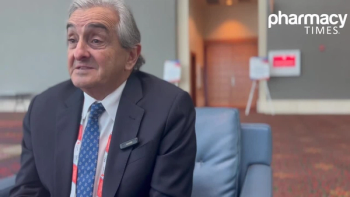
Roflumilast Gets the Go-Ahead for Patients with Asthma-COPD Overlap Syndrome
Roflumilast has been found to help prevent flare-ups associated with COPD.
Roflumilast has been found to help prevent flare-ups associated with COPD.
Asthma presents its own set of challenges, as does chronic obstructive pulmonary disease (COPD). When characteristics from both merge together it causes asthma-COPD overlap syndrome (ACOS).
Roflumilast, marketed under the named Daxas and Daliresp, can help prevent flare-ups associated with COPD. V. Beloglazov, from the Medical Academy named after S. I. Georgievsky in Russia, and colleagues studied the effects of roflumilast in patients with ACOS and presented the findings in a poster session at the 2015 American College of Allergy, Asthma, and Immunology Annual Scientific Meeting (ACAAI 2015) in San Antonio, Texas.
The study included 40 patients with both asthma and COPD — 16 males (40%) and 24 females (60%). They received combination therapy of glucocorticosteroids (fluticasone propionate of 1,000 µg per day) and long-acting β2-agonist (salmeterol of 100 µg per day).
Half of the patients solely received this combination therapy. The other half had the combination therapy for one month as well as 500 mg per day of roflumilast.
All of the participants were analyzed using the Asthma Control Questionnaire (ACQ) and dyspnea scale mMRC, and spirometry was done as well. ELISA revealed levels of anti-endotoxin antibodies of IgA, IgN, and IgG class and C-reactive protein.
So was roflumilast successful? To put it simply, yes.
The roflumilast group outcomes showed that 15 patients had a positive response to the drug and four patients did not respond to it. The authors noted that one patient from the group discontinued the trial because they developed insomnia. However, for the most there were several improvements observed in the patients.
For one, roflumilast improved the patients’ quality of life. It also reduced the average ACQ from 3.83 to 1.23 and the dyspnea scale mMRC decreased from 2.00 to 1.00. In addition, the drug increased forced expiratory volume in one second (FEV1) from 52.6% to 79.3%. The C-reactive protein dropped from 1.68 mg/l to 0.65 mg/l as well.
“Improvement of mucosal anti-endotoxin immunity occurred with the level of secretory anti-ET-IgA being reduced from 0.298 to 0.142 optical density units,” the analysis explained.
These positive effects, however, only persisted for six months in 15.8% of patients.
Although the duration of roflumilast needs to be explored further, it appears to provoke immune responses in patients with ACOS.
Newsletter
Stay informed on drug updates, treatment guidelines, and pharmacy practice trends—subscribe to Pharmacy Times for weekly clinical insights.


















































































































































































































